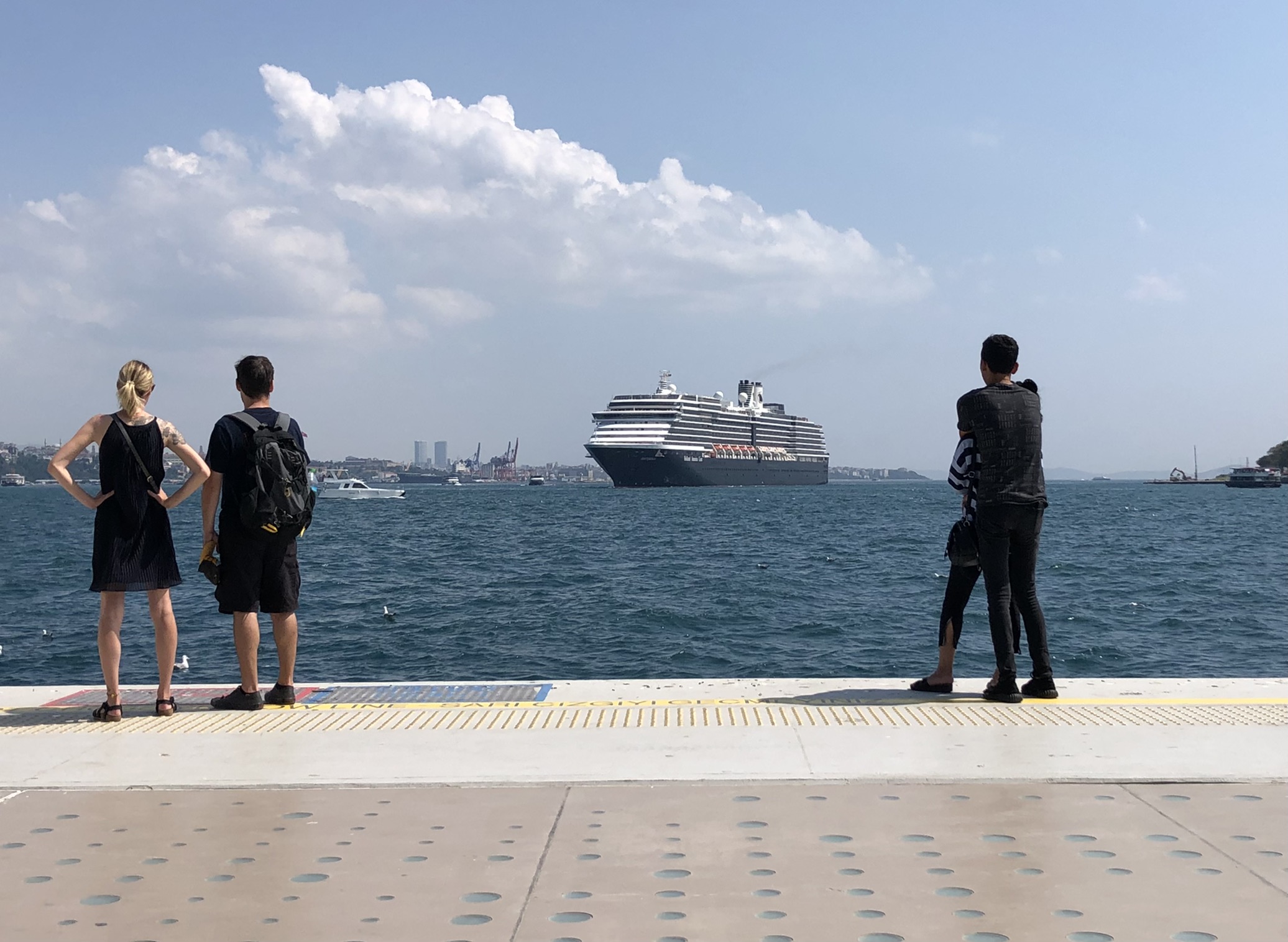
Menu




(c) Jan Rath, 2022 -- Galataport
Like many other great port cities, Istanbul has re-vamped its waterfront so as to make it fit for today’s cognitive‐creative economy. Old and dirty manufacturing industries originally located at the Haliç — a small river that splits the European side in two — moved to different parts of the city, making space for a narrow but long, meandering public park with playgrounds for the kids and even a (short) bicycle track. A former cigar factory located at the Southwestern bank has been converted into a university campus; a former power plant seven kilometer inland has undergone a similar transformation. These developments clearly demonstrate that Istanbul has joined the long queue of cities that try to modernize their economies by re-appreciating and revalorizing formerly unattractive spaces.
Elsewhere, along the Bosphorus in the old neighborhood of Karaköy, another costly ($1.7 billion) and prestigious project is nearing completion: Galataport. Run-down warehouses and marginal business units were torn down to make space for well-designed new buildings. For as far as the old structures had any heritage value, they have been nicely renovated. Ottoman mosques, fountains, kiosks, clock towers and other historic structures such as the French Passage (Francis Pasaj) have been thoroughly renovated and contribute to the landscape’s unique attraction.
The two kilometer long quay is the designated new cruise port. Furthermore, the famous Istanbul Modern museum (designed by celebrity architect Renzo Piano) is situated here, while the remaining spaces are filled with swanky bars and restaurants and high-end clothing and gadget stores, catering to affluent tourists and visitors. It is an undeniable fact that from the Karaköy quays the views of the Bosphorus and the Asian side are spectacular. Also, not unimportant in times of global warming, the temperatures at the waterfront tend to be somewhat lower and more agreeable in the city that tends to fill almost every inch with bricks and mortar. The quay — car free, even in Istanbul! — is the space par excellence for flaneuring and in many ways a competitor to the other famous flaneuring avenue, Istiklal Caddesi.
The well-to-do cruise tourists and other international visitors who flock to Galataport evidently bring massive resources to the city, that is: they contribute to the profits of a small number of entrepreneurs. Notwithstanding this, multiple issues have arisen, and here I will single out two of them.
A first issue relates to gentrification and the right to the city of non-affluent locals. Many years ago, when the redevelopment plans were launched, criticasters argued that the rise of an upmarket leisure and entertainment space of this size would help foster the gentrification of the adjacent lower-class neighborhood, Tophane. Indeed, the establishment of the Istanbul Modern museum several years ago had immediately induced fundamental changes of the retail landscape. Local hairdressers, greengrocers, and food outlets operating at the lower end of the market had gradually been replaced by hip restaurants, specialty coffee bars, and especially art galleries of sorts. Furthermore, mid-prized hotels have moved into Tophane and so did a number of middle-class folks. The first conflicts between conservative, religious lower-class old-timers and cosmopolitan, secular middle-class newcomers have already taken place. The odds are that the process will continue, pushing up the prizes of the land and its amenities, and affecting the turf of the ones who used to call this neighborhood their home.
A second issue relates to the impact on public space. The impact is enormous, as the entire Galataport area is gated! Visitors arriving from the city are halted at a security checkpoint where they must walk through a metal detector before entering the gate area, and phones, keys and hand bags are scanned separately using X-ray technology. Apparently, the authorities want to be absolutely sure that the area is safe. It is a fact that similar forms of protection can be found at the entrance of every shopping mall and they are typically seen as 'normal'. But these are private operations. The security measures at Galataport, however, in the middle of a street, immediately impact the accessibility of public space.
Next to these stringent security measures there is the rather peculiar closure of the waterfront. This is related to the authorities' wish to clear the cruise passengers before they are allowed to enter Turkish soil. For that purpose, a hatch system has been installed creating a temporary customs area while a ship is in port. But the result is an 800-meter long grey wall. Any visitor flaneuring along the quay promenade, enjoying a exquisite meal in one of the chic restaurants or drinking an expensive signature cocktail is suddenly bereaved of the spectacular Bosphorus view: all they see is a concrete wall, making the ‘exciting lifestyle destination’ completely undistinguishable from any average shopping mall. As Turks would grouchily say: Allah Allah.
august 2022
Chick here for more photoblogs
UNIVERSITY OF AMSTERDAM, DEPARTMENT OF SOCIOLOGY
NIEUWE ACHTERGRACHT 166, OFFICE B6.00
PO BOX 15508, NL-1001 NA AMSTERDAM, THE NETHERLANDS
VOICE +31-6-5540-9466 | +31-20-525-3488 (SECR SOC)
E-MAIL RATH@UVA.NL
© JAN RATH 2022. SOME RIGHTS RESERVED.